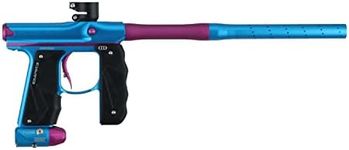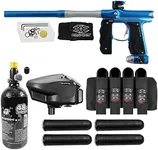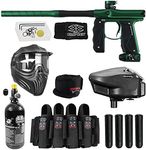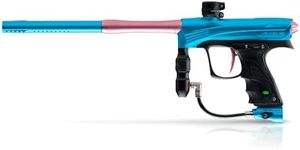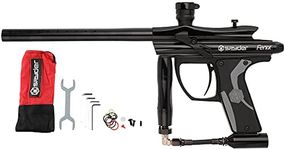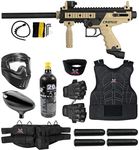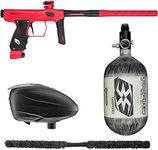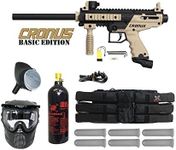Buying Guide for the Best Electronic Paintball Guns
Choosing the right electronic paintball gun can significantly enhance your playing experience. Electronic paintball guns, also known as electro-pneumatic markers, offer advanced features and improved performance over mechanical markers. When selecting the best fit for you, it's essential to consider various specifications that can impact your gameplay. Understanding these key specs will help you make an informed decision based on your playing style, experience level, and preferences.Firing ModesFiring modes refer to the different ways a paintball gun can shoot. Common modes include semi-automatic, burst, and fully automatic. This spec is important because it affects your rate of fire and how you can adapt to different game scenarios. Beginners might prefer semi-automatic for better control, while experienced players might enjoy the versatility of burst or fully automatic modes. Choose a gun with firing modes that match your skill level and playing style.
Rate of Fire (ROF)Rate of Fire (ROF) indicates how many paintballs a gun can shoot per second. This is crucial for players who need to lay down a lot of paint quickly, such as in speedball. ROF can range from around 10 to 30 balls per second. Beginners might be comfortable with a lower ROF for better accuracy and paint conservation, while advanced players might prefer higher ROF for aggressive play. Consider your gameplay needs and how fast you want to shoot.
Trigger SensitivityTrigger sensitivity determines how easily the trigger activates the firing mechanism. This is important for achieving a quick and responsive shot. Sensitivity can vary from light to heavy. Players who prefer rapid firing might opt for a lighter trigger, while those who prioritize control and precision might choose a heavier trigger. Think about how you like to shoot and select a trigger sensitivity that feels comfortable for you.
Battery LifeBattery life refers to how long the electronic components of the paintball gun can operate before needing a recharge or battery replacement. This is important for ensuring your gun remains functional throughout a game. Battery life can vary widely, with some guns lasting several hours and others needing frequent recharges. If you play long games or tournaments, look for a gun with a longer battery life. For casual play, shorter battery life might be sufficient.
Weight and ErgonomicsWeight and ergonomics pertain to how the gun feels in your hands and how easy it is to maneuver. This is crucial for comfort and performance during extended play. Lighter guns are easier to carry and handle, making them ideal for fast-paced games. Heavier guns might offer more stability and durability. Consider your physical strength and how long you typically play when choosing the weight and ergonomic design that suits you best.
Maintenance and ReliabilityMaintenance and reliability refer to how easy it is to keep the gun in good working condition and how dependable it is during play. This is important for ensuring your gun performs well and lasts a long time. Some guns require more frequent cleaning and maintenance, while others are designed to be low-maintenance. If you prefer a hassle-free experience, look for a gun known for its reliability and ease of maintenance. More experienced players might be comfortable with a gun that requires more upkeep.
